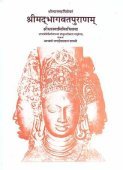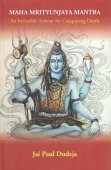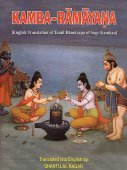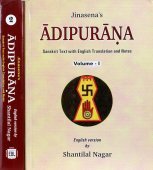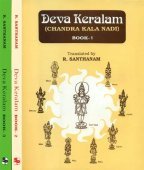Manu, Maṉu, Māṉu, Mānu: 37 definitions
Introduction:
Manu means something in Buddhism, Pali, Hinduism, Sanskrit, Jainism, Prakrit, the history of ancient India, Marathi, Hindi, biology, Tamil. If you want to know the exact meaning, history, etymology or English translation of this term then check out the descriptions on this page. Add your comment or reference to a book if you want to contribute to this summary article.
Images (photo gallery)
In Hinduism
Purana and Itihasa (epic history)
Source: Wisdom Library: Bhagavata PuranaManu (मनु)—One of the eleven other names of Rudra, according to the Bhāgavata Purāṇa 3.12.12.
Source: archive.org: Puranic Encyclopedia1) Manu (मनु).—See under Manvantara.
2) Manu (मनु).—Son of the Agni Pāñcajanya. Pāñcajanya had three wives Suprajā, Bṛhadbhāsā and Niśā. He got of his first two wives six sons and of his third wife Niśā, a daughter and seven sons. (Chapter 223, Vana Parva).
3) Manu (मनु).—A celestial maiden born to Kaśyapa of Pradhā. (Chapter 59, Verse 44, Ādi Parva).
Source: archive.org: Shiva Purana - English TranslationManu (मनु) represents a form of Dharma: the name of a Sādhaka (aspirant) created by Brahmā out of his conception (saṅkalpa), according to the Śivapurāṇa 2.1.16:—“[...] O foremost among sages, creating thus, thanks to the favour of Mahādeva, these excellent Sādhakas (e.g., Dharma) I [viz., Brahmā] became contented. Then, O dear one, Dharma, born out of my conception assumed the form of Manu at my bidding and was engaged in activity by the aspirants”.
Source: Cologne Digital Sanskrit Dictionaries: The Purana Index1a) Manu (मनु).—A son of Dhiṣaṇā and Kṛśāśya.*
- * Bhāgavata-purāṇa VI. 6. 20.
1b) A Pravara.*
- * Matsya-purāṇa 196. 30.
1c) A Sādhya god.*
- * Matsya-purāṇa 203. 11.
1d) The author of a Dharmaśāstra; grass cut for cow is not punishable; so also flowers plucked from gardens other than those of temples for the worship of god.*
- * Matsya-purāṇa 227. 27, 32, 113.
1e) Approached by Varūtri's sons to ruin the offerings to Gods but interrupted by Indra.*
- * Vāyu-purāṇa 65. 79.
1f) A son of Bāṣkala.*
- * Vāyu-purāṇa 67. 79.
1g) A son of Śighraka; established himself in Kalāpagrāma by yoga.*
- * Vāyu-purāṇa 88. 210.
1h) One of the sons of Madhu.*
- * Vāyu-purāṇa 95. 45.
1i) The son of Haryaśva and father of Pratika.*
- * Viṣṇu-purāṇa IV. 5. 27.
1j) Worshipped with Devas for kingdom; their duties in different epochs described.1 Fourteen in number; went to Maharloka when their duties were over;2 in order: Svāyambhuva, Svārociṣa, Auttama, Tāmasa, Raivata, Cākṣuṣa; these six are past ones; the future are eight; Sāvarṇa, Pañcaraucyas, Bhautya and Vaivasvata.3
- 1) Bhāgavata-purāṇa II. 3. 9; VIII. 14. 2-10
- 2) Brahmāṇḍa-purāṇa IV. 2. 2 nad 5.
- 3) Vāyu-purāṇa 62. 3-4.
Manu (मनु) is a name mentioned in the Mahābhārata (cf. I.60.40) and represents one of the many proper names used for people and places. Note: The Mahābhārata (mentioning Manu) is a Sanskrit epic poem consisting of 100,000 ślokas (metrical verses) and is over 2000 years old.
Source: Shodhganga: The saurapurana - a critical studyManu (मनु) (Vaivasvata) is the son of Saṃjñā and Bhāskara (sun-god): the son of Aditi and Kaśyapa according to the Vaṃśānucarita section of the 10th century Saurapurāṇa: one of the various Upapurāṇas depicting Śaivism.—Accordingly, the Saurapurāṇa 30.27-73 and chapter 31 descibes the vaṃśānucarita in an abridged form. It is stated that Aditi got from Kaśyapa, Bhāskara, the Sun-god. The Sun-god had four wives—Saṃjñā, Rājñī, Prabhā and Chāyā. It is stated that Aditi got from Kaśyapa, Bhāskara, the Sun-god. The Sun-god had four wives [viz., Saṃjñā]. Saṃjñā gave birth to Manu from the sun-god in whose race were born the kings.
Manu Vaivasvata had nine sons and three daughters.—Ikṣvāku, Nabhaga, Dhṛṣṭa, Śaryāti, Nariṣyanta, Nābhāga, Ariṣṭa, Karuṣa (Karūṣa?) and Vṛṣadhvaja—these glorious kings are said to be the nine sons of Manu Vaivasvata and the daughters were Ilā, Jyeṣṭhā and Variṣṭhā.

The Purana (पुराण, purāṇas) refers to Sanskrit literature preserving ancient India’s vast cultural history, including historical legends, religious ceremonies, various arts and sciences. The eighteen mahapuranas total over 400,000 shlokas (metrical couplets) and date to at least several centuries BCE.
Vaishnavism (Vaishava dharma)
Source: ISKCON Press: GlossaryManu (मनु).—A generic name for any of the fourteen universal rulers also known as Manvantara-avataras, who appear in each day of Lord Brahmā.
Their names are
- Svāyambhuva;
- Svārociṣa;
- Uttama;
- Tāmasa;
- Raivata;
- Cākṣusa;
- Vaivasvata;
- Savarṇi;
- Dakṣasāvarṇi;
- Brahmasāvarṇi;
- Dharmasāvarṇi;
- Rudrasāvarṇi;
- Devasāvarni;
- Indrasāvarṇi.
Manu (मनु) refers to:—Universal rulers, lawgivers, and progenitors. Fourteen Manus appear in each day of Brahmā. The present Manu is Vaivasvata Manu. (cf. Glossary page from Śrī Bṛhad-bhāgavatāmṛta).

Vaishnava (वैष्णव, vaiṣṇava) or vaishnavism (vaiṣṇavism) represents a tradition of Hinduism worshipping Vishnu as the supreme Lord. Similar to the Shaktism and Shaivism traditions, Vaishnavism also developed as an individual movement, famous for its exposition of the dashavatara (‘ten avatars of Vishnu’).
Natyashastra (theatrics and dramaturgy)
Source: Wisdom Library: Nāṭya-śāstraManu (मनु) is the name of a sage who was in the company of Bharata when he recited the Nāṭyaveda them, according to the Nāṭyaśāstra chapter 35. Accordingly, they asked the following questions, “O the best Brahmin (lit. the bull of the twice-born), tell us about the character of the god who appears in the Preliminaries (pūrvaraṅga). Why is the sound [of musical instruments] applied there? What purpose does it serve when applied? What god is pleased with this, and what does he do on being pleased? Why does the Director being himself clean, perform ablution again on the stage? How, O sir, the drama has come (lit. dropped) down to the earth from heaven? Why have your descendants come to be known as Śūdras?”.

Natyashastra (नाट्यशास्त्र, nāṭyaśāstra) refers to both the ancient Indian tradition (shastra) of performing arts, (natya—theatrics, drama, dance, music), as well as the name of a Sanskrit work dealing with these subjects. It also teaches the rules for composing Dramatic plays (nataka), construction and performance of Theater, and Poetic works (kavya).
Jyotisha (astronomy and astrology)
Source: Wikibooks (hi): Sanskrit Technical TermsManu (मनु).—A period of time equal to 72 yugas. Note: Manu is a Sanskrit technical term used in ancient Indian sciences such as Astronomy, Mathematics and Geometry.

Jyotisha (ज्योतिष, jyotiṣa or jyotish) refers to ‘astronomy’ or “Vedic astrology” and represents the fifth of the six Vedangas (additional sciences to be studied along with the Vedas). Jyotisha concerns itself with the study and prediction of the movements of celestial bodies, in order to calculate the auspicious time for rituals and ceremonies.
Vastushastra (architecture)
Source: archive.org: Bharatiya vastu-sastraManu (मनु) is the name of an ancient teacher (ācārya) of Vāstuśāsta (science of architecture) according to the Matsyapurāṇa.—All these great teachers cannot be said to be legendary. Some used to be propagated in ancient India. No nation can flourish without its care for its material prosperity. All this technique and training and their systematic and successful teaching and transmission were of equal importance. Most of the treatises of Vāstuśāstra carry many of these names [i.e., Manu], yet a good many of them are quoted as authorities, yet still others are honoured with actual passages being quoted from their works.

Vastushastra (वास्तुशास्त्र, vāstuśāstra) refers to the ancient Indian science (shastra) of architecture (vastu), dealing with topics such architecture, sculpture, town-building, fort building and various other constructions. Vastu also deals with the philosophy of the architectural relation with the cosmic universe.
Shaktism (Shakta philosophy)
Source: Google Books: ManthanabhairavatantramManu (मनु) refers to a “mantra”, according to the Manthānabhairavatantra, a vast sprawling work that belongs to a corpus of Tantric texts concerned with the worship of the goddess Kubjikā.—Accordingly, “The sacred seat Jāla is the Unmanifest. It is well placed in the southern quarter. It is black and called the most excellent. The mother (avvā) is the venerable lioness Kālikā. It bestows the boon of the mantra of nine (letters i.e. Navātman) [i.e., nava-manu-varada]. The tree is called Bilva. The cave is called Ratnā; it contains the best Rule and is well known by the name 'Vīra'. The cremation ground is called Laguḍa. [...]”.

Shakta (शाक्त, śākta) or Shaktism (śāktism) represents a tradition of Hinduism where the Goddess (Devi) is revered and worshipped. Shakta literature includes a range of scriptures, including various Agamas and Tantras, although its roots may be traced back to the Vedas.
Ganitashastra (Mathematics and Algebra)
Source: archive.org: Hindu MathematicsManu (मनु) represents the number 14 (fourteen) in the “word-numeral system” (bhūtasaṃkhyā), which was used in Sanskrit texts dealing with astronomy, mathematics, metrics, as well as in the dates of inscriptions and manuscripts in ancient Indian literature.—A system of expressing numbers by means of words arranged as in the place-value notation was developed and perfected in India in the early centuries of the Christian era. In this system the numerals [e.g., 14—manu] are expressed by names of things, beings or concepts, which, naturally or in accordance with the teaching of the Śāstras, connote numbers.

Ganitashastra (शिल्पशास्त्र, gaṇitaśāstra) refers to the ancient Indian science of mathematics, algebra, number theory, arithmetic, etc. Closely allied with astronomy, both were commonly taught and studied in universities, even since the 1st millennium BCE. Ganita-shastra also includes ritualistic math-books such as the Shulba-sutras.
General definition (in Hinduism)
Source: Apam Napat: Indian MythologyManu is the earliest Prajapati (Lit. 'Lord-of-all-creatures') and the son of Vivasvant, the sun God. He is the father of Ikshvaku, the first King of Ayodhya and the ancestor of Rama, the hero of the epic Ramayana. See [Rama:1.70.21].
According to B.P., he obtained nine sons by performing a sacrifice. Those sons are:
- Ikshvaku,
- Nabhaga,
- Dhrishta,
- Sharyati,
- Narishyanta,
- Pramashu,
- Rishta,
- Karusha
- and Prishadhara.
A daughter named Ila was also born to him when he prayed to the gods Mitra and Varuna. In another place, the B.P. says that Ikshvaku was born from the nostril of his father Manu.
In Buddhism
Theravada (major branch of Buddhism)
Source: Pali Kanon: Pali Proper NamesAn Indian sage of old who wrote a work for the guidance of kings in good government. E.g., Cv.lxxx.9, 55; lxxxiii.6; lxxxiv.2; xcvi.26.
Theravāda is a major branch of Buddhism having the the Pali canon (tipitaka) as their canonical literature, which includes the vinaya-pitaka (monastic rules), the sutta-pitaka (Buddhist sermons) and the abhidhamma-pitaka (philosophy and psychology).
In Jainism
General definition (in Jainism)
Source: archive.org: TrisastisalakapurusacaritraManu (मनु) or Manuvidyā refers to one of the sixteen Vidyās from which are derived the respective classes of Vidyādharas (in this case, Manupūrvaka), according to chapter 1.3 [ādīśvara-caritra] of Hemacandra’s 11th century Triṣaṣṭiśalākāpuruṣacaritra: an ancient Sanskrit epic poem narrating the history and legends of sixty-three illustrious persons in Jainism.
Accordingly,
“[...] After making [the two rows of Vidyādhara-cities], many villages and suburbs, they established communities [viz., the Manupūrvakas] according to the suitability of place. [...] Dharaṇendra instructed them about the law as follows: ‘If any insolent persons show disrespect or do injury to the Jinas, or the Jinas’ shrines, or to those who will attain mokṣa in this birth, or to any ascetics engaged in pratimā, the Vidyās [viz., Manus] will abandon them at once, just as wealth abandons lazy people. Whoever kills a man with his wife, or enjoys women against their will, the Vidyās will abandon him at once’.”

Jainism is an Indian religion of Dharma whose doctrine revolves around harmlessness (ahimsa) towards every living being. The two major branches (Digambara and Svetambara) of Jainism stimulate self-control (or, shramana, ‘self-reliance’) and spiritual development through a path of peace for the soul to progess to the ultimate goal.
India history and geography
Source: Cologne Digital Sanskrit Dictionaries: Indian Epigraphical GlossaryManu.—(IE 7-1-2), ‘fourteen’. Note: manu is defined in the “Indian epigraphical glossary” as it can be found on ancient inscriptions commonly written in Sanskrit, Prakrit or Dravidian languages.

The history of India traces the identification of countries, villages, towns and other regions of India, as well as mythology, zoology, royal dynasties, rulers, tribes, local festivities and traditions and regional languages. Ancient India enjoyed religious freedom and encourages the path of Dharma, a concept common to Buddhism, Hinduism, and Jainism.
Biology (plants and animals)
Source: Wisdom Library: Local Names of Plants and DrugsManu [མནུ་] in the Ladakhi language is the name of a plant identified with Inula racemosa Hook. f. from the Asteraceae (Sunflower) family. For the possible medicinal usage of manu, you can check this page for potential sources and references, although be aware that any some or none of the side-effects may not be mentioned here, wether they be harmful or beneficial to health.
Source: Google Books: CRC World Dictionary (Regional names)1) Manu in India is the name of a plant defined with Anchusa strigosa in various botanical sources. This page contains potential references in Ayurveda, modern medicine, and other folk traditions or local practices It has the synonym Anchusa strigosa Labill..
2) Manu is also identified with Inula racemosa It has the synonym Inula royleana DC. (etc.).
3) Manu in Tanzania is also identified with Clutia abyssinica It has the synonym Clutia abyssinica var. deserticola Volkens (etc.).
Example references for further research on medicinal uses or toxicity (see latin names for full list):
· Prodr. (DC.) (1836)
· Botanische Jahrbücher für Systematik, Pflanzengeschichte und Pflanzengeographie (1901)
· Phytochemistry (1998)
· Illustrationes Plantarum Orientalium (1855)
· Tent. Fl. Abyss. (1850)
· Das Pflanzenreich (1914)
If you are looking for specific details regarding Manu, for example health benefits, diet and recipes, chemical composition, side effects, pregnancy safety, extract dosage, have a look at these references.

This sections includes definitions from the five kingdoms of living things: Animals, Plants, Fungi, Protists and Monera. It will include both the official binomial nomenclature (scientific names usually in Latin) as well as regional spellings and variants.
Languages of India and abroad
Marathi-English dictionary
Source: DDSA: The Molesworth Marathi and English Dictionarymanu (मनु).—m (S) Manu, the great legislator and saint, the son of Brahma or a personification of Brahma himself. The name however is a generic term, and in every kalpa or interval from creation to creation there are fourteen successive manu, presiding over the universe for the period of a manvantara respectively. 2 fig. The proper period or season; the time, the day, the hour &c., emphatically. Ex. dhānya kāpāyācā manu ālā; sadyaḥ tumacē bōla- ṇyācā manu āhē; tumacā manu gēlā mājhā manu ālā. 3 S A man.
Source: DDSA: The Aryabhusan school dictionary, Marathi-Englishmanu (मनु).—m Manu. Fig. The proper season. An epoch, an age.
Marathi is an Indo-European language having over 70 million native speakers people in (predominantly) Maharashtra India. Marathi, like many other Indo-Aryan languages, evolved from early forms of Prakrit, which itself is a subset of Sanskrit, one of the most ancient languages of the world.
Sanskrit dictionary
Source: DDSA: The practical Sanskrit-English dictionaryManu (मनु).—a. Thinking, wise, intelligent, sage; सलोकपाला मुनयो मनूनामाद्यं मनुं प्राञ्जलयः प्रणेमुः (salokapālā munayo manūnāmādyaṃ manuṃ prāñjalayaḥ praṇemuḥ) Bhāgavata 4.6.39.
--- OR ---
Manu (मनु).—[man-u Uṇādi-sūtra 1.1]
1) Name of a celebrated personage regarded as the representative man and father of the human race (sometimes regarded as one of the divine beings).
2) Particularly, the fourteen successive progenitors or sovereigns of the earth mentioned in Manusmṛti 1.63. (The first Manu called svāyaṃbhuvamanu is supposed to be a sort of secondary creator, who produced the ten Prajapatis or Maharṣis and to whom the code of laws known as Manusmriti is ascribed. The seventh Manu called vaivasvatamanu, being supposed to be born from the sun, is regarded as the progenitor of the present race of living beings and was saved from a great flood by Viṣṇu in the form of a fish; cf. matsyāvatāra; he is also regarded as the founder of the solar race of kings who ruled at Ayodhyā; see Uttararāmacarita 6.18; R.1.11; vivasvān manave prāha manurikṣvākave'bravīt Bhagavadgītā (Bombay) 4.1. The names of the fourteen Manus in order are:-1 svāyaṃbhuva, 2 svārociṣa, 3 auttami, 4 tāmasa, 5 raivata, 6 cākṣuṣa, 7 vaivasvata, 8 sāvarṇi, 9 dakṣasāvarṇi, 1 brahmasāvarṇi, 11 dharmasāvarṇi, 12 rudrasāvarṇi, 13 raucya-daivasāvarṇi and 14 iṃdrasāvarṇi).
3) A symbolical expression for the number 'fourteen'.
4) A man, mankind (opp. evil spirits); मनवे शासदव्रतान् (manave śāsadavratān) Ṛv.1.13.8.
5) Thought, thinking or mental faculty (Ved.).
6) A prayer, sacred text or spell (mantra); मनुं साधयतो राज्यं नाकपृष्ठमनाशके (manuṃ sādhayato rājyaṃ nākapṛṣṭhamanāśake) Mahābhārata (Bombay) 13.7.18.
7) (pl.) Mental powers; देहोऽसवोऽक्षा मनवो भूतमात्रा नात्मानमन्यं च विदुः परं यत् (deho'savo'kṣā manavo bhūtamātrā nātmānamanyaṃ ca viduḥ paraṃ yat) Bhāgavata 6.4.25.
-nuḥ f. The wife of Manu.
Derivable forms: manuḥ (मनुः).
Source: Cologne Digital Sanskrit Dictionaries: Edgerton Buddhist Hybrid Sanskrit DictionaryManu (मनु).—f. (in Sanskrit Lex. Manu, f., is recorded as the wife of Manu, m.), name of the ‘mother of mankind’: (tadya- thā) ditir devānāṃ mātā Manur mānavānāṃ Surabhiḥ saurabheyānāṃ…Divyāvadāna 635.3.
Source: Cologne Digital Sanskrit Dictionaries: Shabda-Sagara Sanskrit-English DictionaryManu (मनु).—m.
(-nuḥ) 1. Manu, the legislator and saint, the son of Brahma, or a personification of Brahma himself, the creator of the world and progenitor of mankind; the name is however a generic term. and in every Kalpa or interval from creation to creation, there are fourteen successive Manus presiding over the universe for the period of a Manwantara, respectively; in the present creation there have been the six following Manus: Marichi or Swayambhuva, the supposed revealer of the code of law possessed by the Hindus, Swaro4Chisha, Outtami, Tamasa, Raivata, and Chakshusha; the seventh or the present Manu is Vaivaswata, and is regarded to be the founder of the solar race of kings; Sabarni, Daksha-Sabarni, Brahma-Sabarni, Dharma-Sa- Barni, Rudrasabarni, Deva-Sabarni, and Indra-Savarni, these seven Manus are to come in the present creation. 2. A man in general. 3. One of the Jaina saints. 4. A Mantra, a mystical verse or formula. 5. The number fourteen. f. (-nuḥ-nāyīnāvī) The wife of a legislator or Manu. E. man to know or understand, (the Vedas or scripture especially,) and u Unadi aff.
Source: Cologne Digital Sanskrit Dictionaries: Benfey Sanskrit-English DictionaryManu (मनु).—curtailed manus, q. cf. I. m. 1. A man. 2. Manu, the progenitor of mankind, [Mānavadharmaśāstra] 1, 1; 36 (
Manu (मनु).—[masculine] man, coll. mankind (also manu in manāvadhi); [Name] of a class of divine beings (in later times thought to be 7), [especially] of the father of mankind & suppositious author of a law-book.
Source: Cologne Digital Sanskrit Dictionaries: Aufrecht Catalogus Catalogorum1) Manu (मनु) as mentioned in Aufrecht’s Catalogus Catalogorum:—and manusmṛti See Mānavadharmaśāstra.
2) Manu (मनु):—son of Lakṣmaṇa: Vaidyasarvasva.
Source: Cologne Digital Sanskrit Dictionaries: Monier-Williams Sanskrit-English Dictionary1) Manu (मनु):—[from man] a mfn. thinking, wise, intelligent, [Vājasaneyi-saṃhitā; Śatapatha-brāhmaṇa]
2) [v.s. ...] m. ‘the thinking creature (?)’, man, mankind, [Ṛg-veda; Vājasaneyi-saṃhitā; Aitareya-brāhmaṇa; Taittirīya-āraṇyaka] (also as opp. to evil spirits, [Ṛg-veda i, 130, 8; viii, 98, 6 etc.]; the Ṛbhus are called manor napātaḥ, the sons of man, [iii, 60, 3])
3) [v.s. ...] the Man par excellence or the representative man and father of the human race (regarded in the [Ṛg-veda] as the first to have instituted sacrifices and religious ceremonies, and associated with the Ṛṣis Kaṇva and Atri; in the [Aitareya-brāhmaṇa] described as dividing his possessions among some of his sons to the exclusion of one called Nābhā-nediṣṭha q.v.; called Sāṃvaraṇa as author of [Ṛg-veda ix, 101, 10-12]; Āpsava as author of [ib. 106, 7-9]; in [Naighaṇṭuka, commented on by Yāska v, 6] he is numbered among the 31 divine beings of the upper sphere, and, [Vājasaneyi-saṃhitā xi, 66] as father of men even identified with Prajā-pati; but the name Manu is [especially] applied to 14 successive mythical progenitors and sovereigns of the earth, described, [Manu-smṛti i, 63] and in later works as creating and supporting this world through successive Antaras or long periods of time See manv-antara below; the first is called Svāyambhuva as sprung from svayam-bhū, the Self-existent, and described in [Manu-smṛti 12, 34] as a sort of secondary creator, who commenced his work by producing 10 Prajāpatis or Maharṣis, of whom the first was marīci, Light; to this Manu is ascribed the celebrated ‘code of Manu’ See manu-saṃhitā, and two ancient Sūtra works on Kalpa and Gṛhya id est. sacrificial and domestic rites; he is also called Hairaṇyagarbha as son of Hiraṇya-garbha, and Prācetasa, as son of Pra-cetas; the next 5 Manus are called Svārociṣa, Auttami, Tāmasa, Raivata, Cākṣuṣa cf. [Indian Wisdom, by Sir M. Monier-Williams 208 n.1]; the 7th Manu, called vaivasvata, Sun-born, or from his piety, satya-vrata, is regarded as the progenitor of the present race of living beings, and said, like the Noah of the Old Testament, to have been preserved from a great flood by Viṣṇu or Brahmā in the form of a fish: he is also variously described as one of the 12 Ādityas, as the author of [Ṛg-veda viii, 27-31], as the brother of Yama, who as a son of he Sun is also called Vaivasvata, as the founder and first king of Ayodhyā, and as father of Ilā who married Budha, son of the Moon, the two great solar and lunar races being thus nearly related to each other See, [Indian Wisdom, by Sir M. Monier-Williams 344; 373]; the 8th Manu or first of the future Manus [according to] to [Viṣṇu-purāṇa iii, 2], will be Sāvarṇi; the 9th Dakṣa-sāvarṇi; the 12th Rudra-sāvarṇi; the 13th Raucya or Deva-sāvarṇi; the 14th Bhautya or Indra-s°)
4) [v.s. ...] thought (= manas), [Taittirīya-saṃhitā; Brāhmaṇa]
5) [v.s. ...] a sacred text, prayer, incantation, spell (= mantra), [Rāmatāpanīya-upaniṣad; Pañcarātra; Pratāparudrīya]
6) [v.s. ...] Name of an Agni, [Mahābhārata]
7) [v.s. ...] of a Rudra, [Purāṇa]
8) [v.s. ...] of Kṛśāśva, [Bhāgavata-purāṇa]
9) [v.s. ...] of an astronomer, [Catalogue(s)]
10) [v.s. ...] ([plural]) the mental Powers, [Bhāgavata-purāṇa]
11) [v.s. ...] Name of the number ‘fourteen’ (on account of the 14 Manus), [Sūryasiddhānta]
12) [v.s. ...] f. Manu’s wife (= manāvī), [cf. Lexicographers, esp. such as amarasiṃha, halāyudha, hemacandra, etc.]; Trigonella Corniculata, [cf. Lexicographers, esp. such as amarasiṃha, halāyudha, hemacandra, etc.]
13) [v.s. ...] cf. [Gothic] manna; [German] Mannus, mentioned by Tacitus as the mythical ancestor of the West-Germans, Mann, man; [Anglo-Saxon] man; [English] man.
14) b etc. See p. 784, col. 2.
Source: Cologne Digital Sanskrit Dictionaries: Yates Sanskrit-English DictionaryManu (मनु):—(nuḥ) 2. m. Manu, the legislator; man; mantra. f. Manu's wife.
Source: DDSA: Paia-sadda-mahannavo; a comprehensive Prakrit Hindi dictionary (S)Manu (मनु) in the Sanskrit language is related to the Prakrit word: Maṇu.
[Sanskrit to German]
Sanskrit, also spelled संस्कृतम् (saṃskṛtam), is an ancient language of India commonly seen as the grandmother of the Indo-European language family (even English!). Closely allied with Prakrit and Pali, Sanskrit is more exhaustive in both grammar and terms and has the most extensive collection of literature in the world, greatly surpassing its sister-languages Greek and Latin.
Hindi dictionary
Source: DDSA: A practical Hindi-English dictionaryManu (मनु):—(nm) the primogenitor of human race; ~[ja/jāta] the offspring of [manu], man; ~[jatā/jatva] humanity, humaneness, human quality.
...
Prakrit-English dictionary
Source: DDSA: Paia-sadda-mahannavo; a comprehensive Prakrit Hindi dictionaryMaṇu (मणु) in the Prakrit language is related to the Sanskrit word: Manu.
Prakrit is an ancient language closely associated with both Pali and Sanskrit. Jain literature is often composed in this language or sub-dialects, such as the Agamas and their commentaries which are written in Ardhamagadhi and Maharashtri Prakrit. The earliest extant texts can be dated to as early as the 4th century BCE although core portions might be older.
Kannada-English dictionary
Source: Alar: Kannada-English corpusMaṇu (ಮಣು):—[noun] = ಮಣ್ಣು [mannu].
--- OR ---
Manu (ಮನು):—
1) [noun] a prosodic verse, in praise of a deity or expounding a cosmic truth, esp. in a symbolic manner; a hymn.
2) [noun] (myth.) the father of mankind; the man par excellence.
3) [noun] any of the fourteen sons of Brahma, the Creator of the universe, who are considered as forefathers of mankind.
4) [noun] (math.) a symbol for the number fourteen.
--- OR ---
Māṇu (ಮಾಣು):—
1) [verb] to stop; to desist from (making, acting, doing, etc.).
2) [verb] to be stopped; to cease.
3) [verb] to be quiet, inactive.
4) [verb] to make late; to slow up; to delay.
5) [verb] to be prevented, stopped from happening or from continuing to be happening, etc.
6) [verb] (a disease, wound, etc.) to be cured; to be healed.
7) [verb] to allow concession in the payment (as of tax).
8) [verb] to be lost, missed.
9) [verb] to move or go quietly, cautiously or unobtrusively; to slip out.
10) [verb] to fail in fulfilling one’s promise, vow, etc.
11) [verb] to lose brightness, lustre; to become dull.
12) [verb] to shine well; to look dazzling.
13) [verb] to bring under control; to subdue; to subjugate.
14) [verb] to make an exception of; to exclude; to except.
Kannada is a Dravidian language (as opposed to the Indo-European language family) mainly spoken in the southwestern region of India.
Tamil dictionary
Source: DDSA: University of Madras: Tamil LexiconMaṇu (மணு) noun < Urdu man. Maund, a standard weight = 8 viss = 40 seers = 25 lbs., varying in different localities; எட்டு வீசை கொண்ட மணங்கு என்னும் அளவு. [ettu visai konda manangu ennum alavu.] Colloq.
--- OR ---
Maṉu (மனு) noun < manutharma sathiram
1. The fourteen successive mythical progenitors and sovereigns of the earth, viz., Cuvāyampu, Cuvārōciṣaṉ, Uttamaṉ, Tāmacaṉ, Iraivataṉ, Cāṭcuṣaṉ, Vaivaccutaṉ, Cūriyacāvarṇi, Iraippiyaṉ, Piramacāvarṇi, Tarumacāvarṇi, Uruttiracāvarṇi, Tēvacāvarṇi, Intiracāvarṇi; படைப்புக் காலத்து மானுடரைத் தோற்றுவிக்கும் சுவாயம்பு, சுவாரோசிஷன், உத்தமன், தாமசன், இரைவதன், சாட்சுஷன், வைவச்சுதன், சூரியசாவர்ணி, இரைப் பியன், பிரமசாவர்ணி, தருமசாவர்ணி, உருத்திர சாவர்ணி, தேவசாவர்ணி, இந்திரசாவர்ணி என்ற [padaippug kalathu manudaraith thorruvikkum suvayambu, suvarosishan, uthaman, thamasan, iraivathan, sadsushan, vaivachuthan, suriyasavarni, iraip piyan, piramasavarni, tharumasavarni, uruthira savarni, thevasavarni, inthirasavarni enra] 14 ஆதி அரசர். (அபிதானசிந்தாமணிமேகலை) [athi arasar. (apithanasindamani)]
2. Vaivasvata, the 7th Manu, founder and first king of the Solar race; சூரியகுலத்து முதலரசனான ஏழாம் மனு. [suriyagulathu muthalarasanana ezham manutharma sathiram] (கம்பராமாயணம் குலமுறை. [kambaramayanam kulamurai.] 1.)
3. A Sanskrit text-book of Hindu law ascribed to Manu, one of 18 taruma-nūl, q.v.; தருமநூல் பதினெட்டனுள் ஒன்றான மனுதர்ம சாஸ்திரம். (பிங்கலகண்டு) [tharumanul pathinettanul onrana manutharma sasthiram. (pingalagandu)]
4. Dharma Sāstra; தருமநூல். [tharumanul.] (பூகோளவிலாசம் [pugolavilasam], 422.)
5. Incantation, mystical verse or formula; மந்திரம். நெடுமறை மனுக்கள் கூறி [manthiram. nedumarai manukkal kuri] (கந்தபு. திருக்கல். [kanthapu. thirukkal.] 70).
6. Man; மனிதன். மனுவாய்த் தவஞ்செய்வாரின் [manithan. manuvayth thavancheyvarin] (மகாபாரதம் அருச்சுனன்றவ. [magaparatham aruchunanrava.] 38).
7. An ancient Chōla king; சோழமன்னர் களின் முன்னோன். மனுநூற் றொடைமனுவாற் றுடைப்புண்ட தெனும் வார்த்தை [sozhamannar kalin munnon. manunur rodaimanuvar rudaippunda thenum varthai] (பெரியபுராணம் மனுநீதி. [periyapuranam manunithi.] 37).
--- OR ---
Maṉu (மனு) noun [Telugu: manavi, K. manane.]
1. Petition; request; prayer; விண்ணப்பம். ஞானம் வாய்க்குமொருமனு வெனக்கிங் கில்லாமை யொன்றினையும் [vinnappam. gnanam vaykkumorumanu venakking killamai yonrinaiyum] (தாயுமானசுவாமிகள் பாடல் எங்குநிறை. [thayumanasuvamigal padal engunirai.] 8).
2. Word; submission; வார்த்தை. மனுவொன்று பேசுவானே [varthai. manuvonru pesuvane] (இராமநாடகம் கிஷ். [iramanadagam kish.] 9).
--- OR ---
Maṉu (மனு) noun < Urdu man. A measure of capacity. See மணு. [manutharma sathiram] Colloq.
--- OR ---
Māṉu (மானு) [māṉutal] 5 transitive verb See மான்⁵-. [man⁵-.] (W.)
Tamil is an ancient language of India from the Dravidian family spoken by roughly 250 million people mainly in southern India and Sri Lanka.
See also (Relevant definitions)
Starts with (+290): Maanu-chhuttinu, Maanush, Manaje, Manu seshing, Manu Smriti, Manu-chuttinu, Manu-murai-kantacolan, Manu-pasupu, Manu-tarmacastiram, Manua, Manubai, Manubhu, Manucan, Manucarita, Manucumiruti, Manudivi, Manudukkurundu, Manuesara, Manuga, Manugavya.
Ends with (+89): Adhamanu, Anantaparamanu, Anjaneyamanu, Anumanu, Ashtavimshatitamamanu, Atidurgamanu, Auttamamanu, Bhadrakalimanu, Bhrityaparamanu, Brihomanu, Cakshumanu, Cakshushamanu, Cakshushantaramanu, Camanu, Caturdashamanu, Cevamanu, Chakshumanu, Chakshushamanu, Chakshushantaramanu, Cheramanu.
Full-text (+9200): Manvantara, Manus, Savarni, Dharmasavarni, Svarocisha, Manava, Svayambhuva, Manuja, Akalmasha, Maanu-chhuttinu, Manayi, Auttami, Raivata, Manuniti, Manuyuga, Manu-tarmacastiram, Manuvakkiyam, Manucumiruti, Manunul, Jnanamaya.
Relevant text
Search found 207 books and stories containing Manu, Maanu, Maṇu, Māṇu, Maṉu, Māṉu, Mānu; (plurals include: Manus, Maanus, Maṇus, Māṇus, Maṉus, Māṉus, Mānus). You can also click to the full overview containing English textual excerpts. Below are direct links for the most relevant articles:
Rig Veda (translation and commentary) (by H. H. Wilson)
Garga Samhita (English) (by Danavir Goswami)
Verse 5.18.7 < [Chapter 18 - Uddhava Hears the Gopīs’ Words and Returns to Mathurā]
Verse 1.5.28 < [Chapter 5 - The Lord’s Appearance]
Verse 6.3.10 < [Chapter 3 - Lord Balarāma’s Wedding]
Manusmriti with the Commentary of Medhatithi (by Ganganatha Jha)
Verse 1.102 < [Section LIX - Superiority of the Brāhmaṇa]
Verse 1.61 < [Section XXXVI - Manvantara and the Seven Manus]
Verse 1.36 < [Section XX - Creation of Marīci and other Sages]
Vasudevavijaya of Vasudeva (Study) (by Sajitha. A)
Strīpratyaya (Feminine affixes) < [Chapter 3 - Vāsudevavijaya—A Grammatical Study]
Poetic charm in Vāsudevavijaya < [Chapter 4 - Vāsudevavijaya—A Literary Appreciation]
Dharmaśāstra (the Dharmasūtras and Smṛtis) < [Chapter 5 - Impact of other Disciplines in Vāsudevavijaya]
The Brahmanda Purana (by G.V. Tagare)
Chapter 1 - Description of the dissolution of the Universe (a) < [Section 4a - Upasaṃhāra-pāda]
Chapter 36 - The Lineage of Manu: Manvantaras < [Section 2 - Anuṣaṅga-pāda]
Chapter 1 - Contents of the Brahmāṇḍa Purāṇa < [Section 1 - Prakriyā-pāda (section on rites)]
The Bhagavata Purana (by G. V. Tagare)
Chapter 11 - The concept of Time: Manvantaras and life-spans of Men and Gods < [Book 3 - Third Skandha]
Chapter 14 - Duties of Manus and Their Functionaries < [Book 8 - Eighth Skandha]
Chapter 13 - Description of the Future Manvantaras < [Book 8 - Eighth Skandha]
Related products

